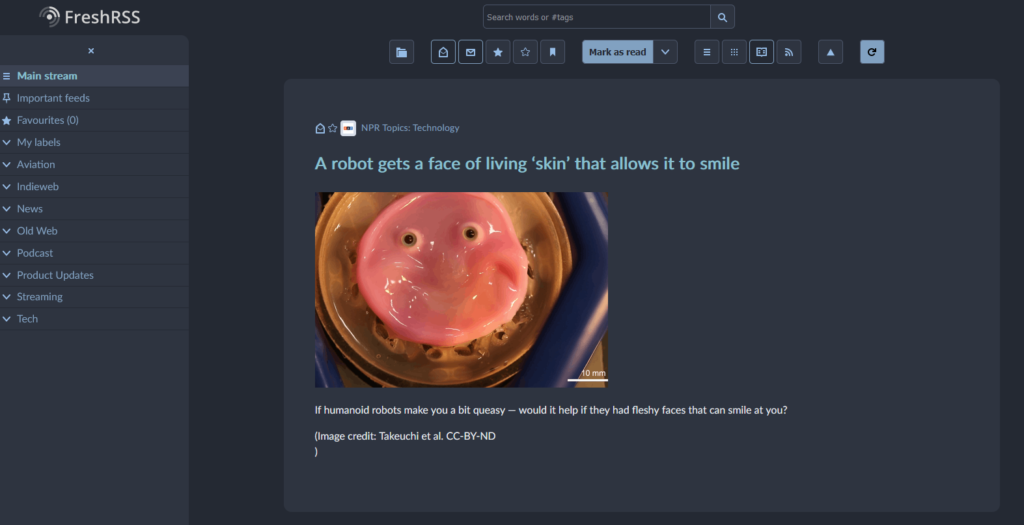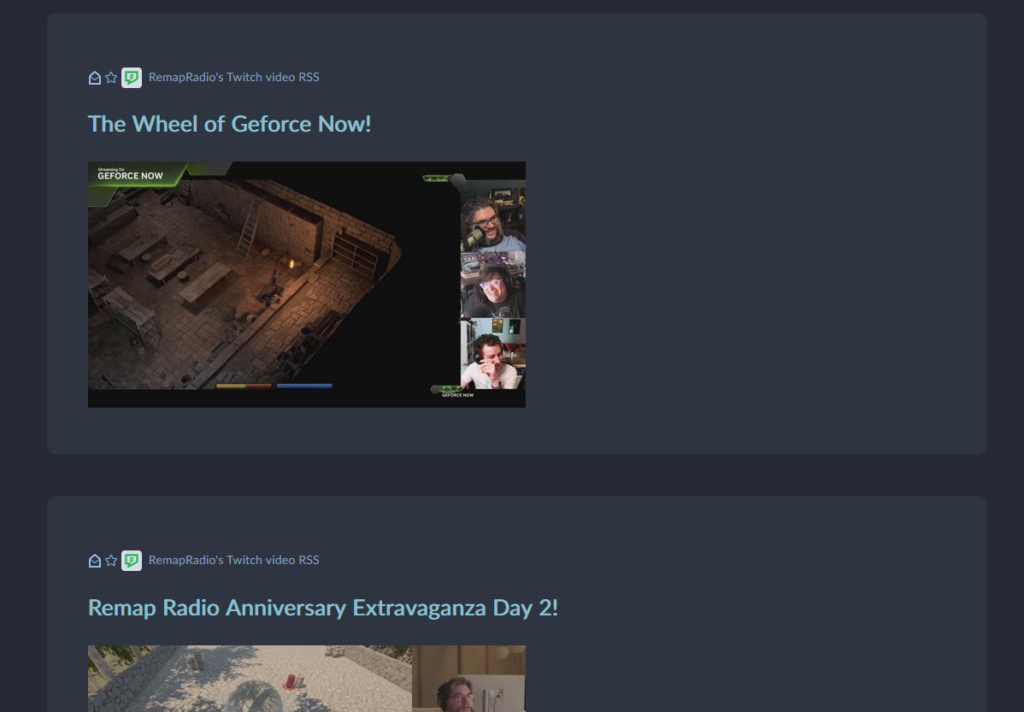Retreat to Move Forward: RSS
There’s a popular belief that Google, and the internet in general, started going to shit the day it killed the beloved Google Reader. If nothing else, it was the first signal that the fun and experimental Google everyone knew and loved had put on its big boy pants and gotten down to Serious Business (i.e., killing anything outside of ads & search that doesn’t make a kajillion dollars in a few months).
Reader was a perfect companion to the web of the time. Blogs, LiveJournal, news sites, and podcasts all generated RSS feeds. In the case of podcasts, RSS was the principle means of distribution, as it remains to the present day. That little orange icon was everywhere, allowing anyone with an RSS reader to collate dozens of websites into a single collection of items. You could fire it up and quietly read through everything while sipping your morning coffee.
There were plenty of different readers out there, but Google’s was the best. It’s hard to believe today, but there was a time when Google was seen as fun, fresh, and inventive. They were great at anticipating what the user wanted and giving it to them before they even realized they wanted it. When they released Gmail, people were out there begging like tweakers for beta code invites. Their interfaces were famous for being clean and fast, and they were so good that their products often became the de facto standard. I mean, do you use Hotmail? What about Alta Vista? Google just straight-up wiped everyone off the board.
But Google wept when it realized there were no more worlds to conquer, so it turned on itself and killed Reader in 2013. To be fair, the web had transformed from an eclectic mix of commercial and independent web sites accessed primarily from desktop computers, to the walled gardens of social media apps on smartphones. Its usage had been dropping for a few years and it had been languishing as Google itself transformed from an innovative and dynamic company into a staid corporate bureaucracy.
I’m guilty of moving on myself. I’m no stranger to chasing the next big thing, whether it be social media websites, smartphones, tablets, or any other sort of technology. But as innovation has given way to iteration, and tech companies chase phantoms to feed the infernal corporate growth machine, a deep sense of dissatisfaction has grown within me and I want to engage with the internet in ways that “they” don’t prefer (“they” being a catch-all term that can include, at any given time, some or all of the following: the tech oligopoly, VCs, marketers, influencers, trad wives, mainstream media, tech journalists, Rogan bros, millennial wankers, cloud service providers, youtubers, podcasters, TikTok teens, JJBA stans, Virtual Machine enthusiasts, concerned mothers, redditors, and anyone who doesn’t remember and celebrate suck dot com).
So I’ve said fuck it, let’s feast on some RSS goodness. I’ve surveyed the bounty laid out on the table before me and… found it quite barren, save for a few crumbs here and there. Yeah, so not a lot of people have that lil orange icon or an RSS link on their sites anymore. But after installing a Firefox extension, I’ve discovered that just like the back of the Declaration of Independence, there’s still a secret code to view, so long as you have the means to see it.
So now I’ve got the ability to find the RSS feed link to a lot of sites, but the next problem is what reader to use? I knew that any third-party hosted solutions were out of the question. Been there, done that, got the data breach. Problem is, that’s just about what everything is these days.
Luckily, I found FreshRSS. Now before you think I’ve suddenly launched into an ad read in the middle of this post like some ersatz podcaster, rest assured this isn’t meal delivery service, website builder, or personal grooming device.
FreshRSS is a feed aggregator that you can install on your own machine and configure however you like. Nothing is being reported to a data center, nothing is saved in the cloud, and there aren’t constant pop-ups exhorting you to subscribe. You just install it and give it some RSS feeds to display.
I installed it on my home server, fiddled around with some settings, and discovered it had such sights to show me:

Well now we’re cooking with Crisco. As you can see in the above image, I created a few categories and assigned various feeds to each. Every hour, it refreshes and I can read through dozens of items in a few moments. I’ve essentially created a website that brings everything in to me, rather than going out to dozens of places to find something interesting.
The ironic thing is that I’m visiting a wider variety of sites than before. I was probably looking at a handful of sites a day, but now I’m actively seeking a wider breadth of sites to read and bring them into the feed collection. I’ve also discovered a neat easter egg: since no one really pays attention to RSS anymore, but most websites still automatically produce a feed, you can sometimes access articles and stories that sit forlorn behind paywalls.
Most sites only produce an excerpt in their feed and you still have to click through to their site to be served ads and see the rest of the article, which is fine. People gotta eat and vulture capitalists have to exploit the labor of skilled writers for pennies on the dollar before moving on to the next shiny thing to extract and abandon.
The feeds aren’t limited to text posts either. I’ve added podcasts, YouTube channels, and even Twitch channels:

I realize that this is the equivalent of the middle-aged guy cruising around in his ’78 Camaro in a vain attempt to recapture the vitality of his youth, but it really is a useful and enriching way to enjoy a wide variety of multimedia in a format that I’ve created, instead of content served by an algorithm interested in showing me more of the same thing.
Besides, the ’00s don’t really pull the nostalgia strings for me–the mid to late ’90s were my jam–but it was the last era where I felt I was in control of what I viewed, what I discovered, and how I fucked around on the internet. All of us eventually surrendered our privacy, our browsing habits, and our identities in exchange for easy access to the tools, storage, and people needed to express ourselves and consume the content of others.
The tools to reclaim some of what we gave away still exist, but they do require some work. It’s not a friction-less experience. There isn’t an eager corporation attempting to lure you into their ecosystem with an easy-to-create account, so some active effort is needed.
I was even inspired to display a page with a few RSS feeds that I’ve collected on this here website. It’s up there at the Feed Me link. Feel free to take a look and maybe you’ll discover a site or story that catches your fancy. Or don’t. I’m not your dad.
Leave a Reply